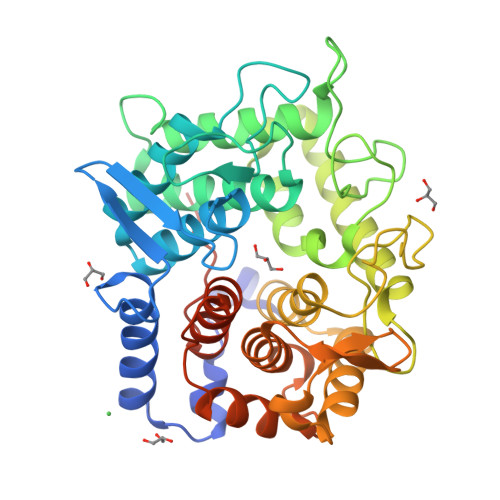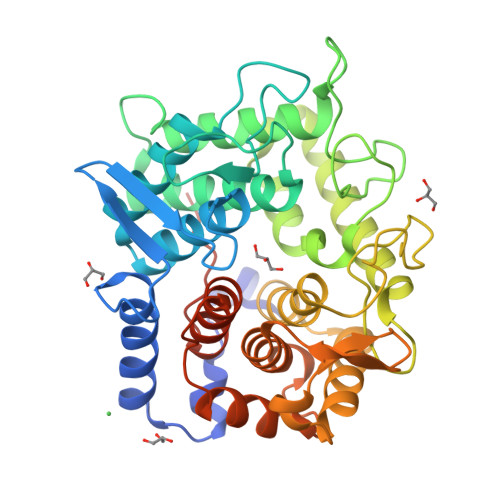Structural explanation for the acquisition of glycosynthase activity
Hidaka, M., Fushinobu, S., Honda, Y., Wakagi, T., Shoun, H., Kitaoka, M.(2010) J Biochem 147: 237-244
- PubMed: 19819900
- DOI: https://doi.org/10.1093/jb/mvp159
- Primary Citation of Related Structures:
2DRO, 2DRQ, 2DRR, 2DRS, 3A3V - PubMed Abstract:
Glycosynthases are engineered glycoside hydrolases (GHs) that catalyse the synthesis of glycoside from glycosyl-fluoride donors and suitable acceptors. We have determined five crystal structures of the glycosynthase mutants reducing-end xylose-releasing exo-oligoxylanase, an inverting GH, that exhibit various levels of glycosynthetic activities. At the active site of the Y198F mutant, the most efficient glycosynthase, a water molecule is observed at the same position as nucleophilic water (NW) in the parent enzyme, and the loss of the fixation of the direction of the lone pair of water molecules in the mutant drastically decreases hydrolytic activity. Water molecules were also observed at each active site of the general base mutant, but they were shifted 1.0-3.0 A from the NW in the wild type. Their positions exhibited a strong correlation with the strength of glycosynthase activity. Here, we propose that a structural prerequisite for the sufficient glycosynthase reaction is the presence of a water molecule at the NW position, and mutation at the NW holder provides a general strategy for inverting GHs. The idea on the position of a water molecule may also be applicable to the design of efficient glycosynthases from retaining GHs.
Organizational Affiliation:
Department of Biotechnology, The University of Tokyo, Tokyo, Japan.




















